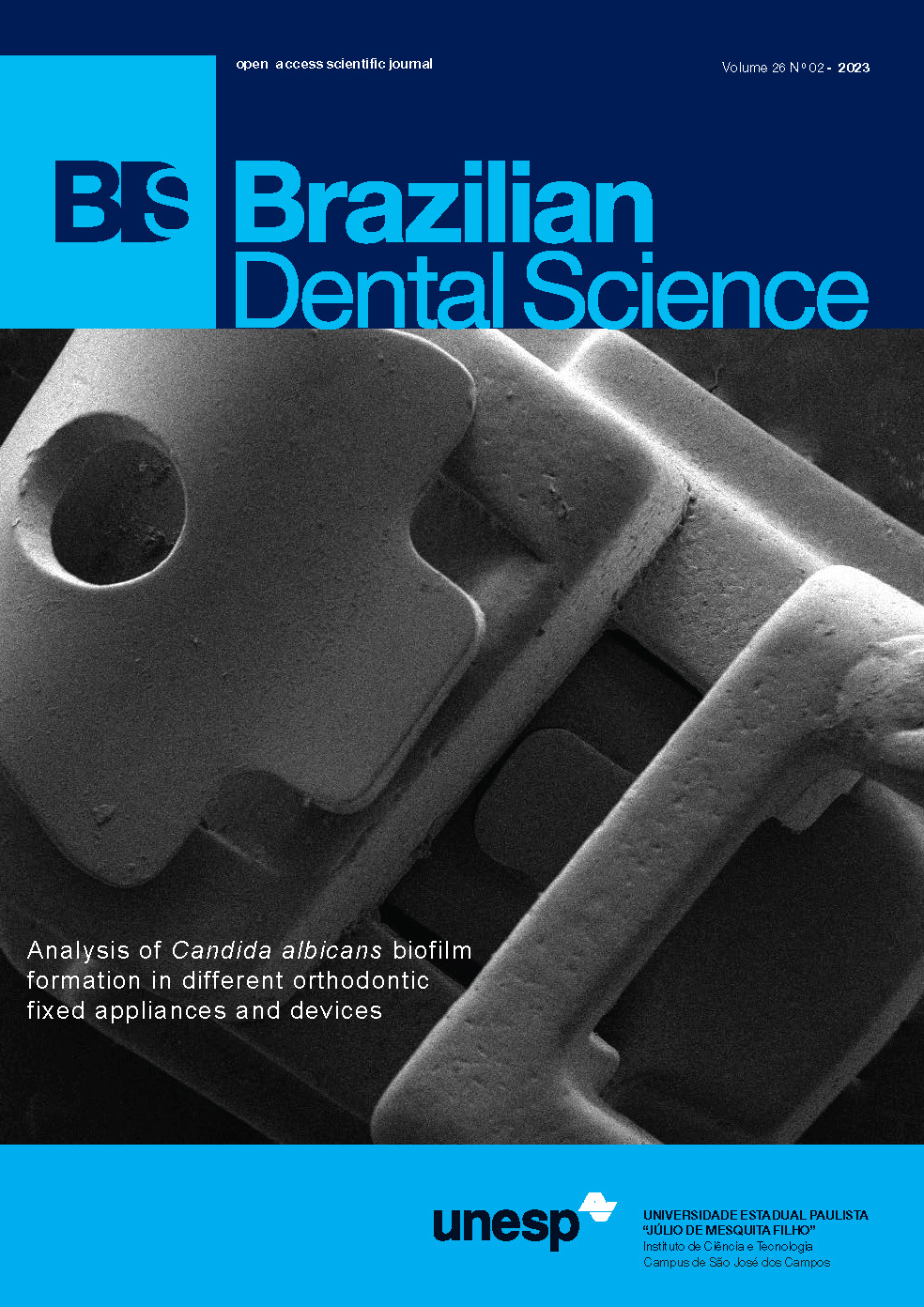Estrogen deficiency influences TNF-alfa and IL-1beta gene expression in the odontogenic region of dental hypofunctional condition
DOI:
https://doi.org/10.4322/bds.2023.e3790Resumo
Objective: Scientific evidence suggests that estrogen deficiency and genetic factors have an influence on the development of the stomatognathic system. This study aimed to evaluate the influence of estrogen deficiency on the gene expression of TNF-alfa, IL-1beta, IL-6 and IL-10 during dental development in a murine model. Material and Methods: Wistar Hannover rats were divided into two groups according to the intervention received: Hypoestrogenism Group - ovariectomy surgery and Control Group - fictitious surgery. To evaluate the dental development, the lower incisor was chosen. The mandibular incisor hypofunction model was performed by incisal adjustment. The homologous incisor exerted a hyperfunction. The animals were evaluated throughout the pubertal period. After euthanasia, the hemimandibles were removed to evaluate the gene expression of the TNF-alfa, IL-1beta, IL-6 and IL-10 in
the odontogenic region of the incisors through real time PCR. Kruskal-Wallis test and Dunn’s posttest were performed. The level of significance was 5%. Results: There were statistically significant differences of TNF-alfa and IL-1beta gene expression between the hypoestrogenism and control groups under hypofunction condition (p=0.0084, p=0.0072, respectively). Conclusion: Estrogen deficiency influences TNF-alfa and IL-1beta gene expression in the odontogenic region of the hypofunctional teeth.
KEYWORDS
Osteogenesis; Estrogen; Proinflammatory cytokines; Gene Expression; Genes.
Downloads
Downloads
Publicado
Como Citar
Edição
Seção
Licença
TRANSFERÊNCIA DE DIREITOS AUTORAIS E DECLARAÇÃO DE RESPONSABILIDADE
Toda a propriedade de direitos autorais do artigo "____________________________________________________________________" é transferido do autor(es) para a CIÊNCIA ODONTOLÓGICA BRASILEIRA, no caso do trabalho ser publicado. O artigo não foi publicado em outro lugar e não foi submetido simultaneamente para publicação em outra revista.
Vimos por meio deste, atestar que trabalho é original e não apresenta dados manipulados, fraude ou plágio. Fizemos contribuição científica significativa para o estudo e estamos cientes dos dados apresentados e de acordo com a versão final do artigo. Assumimos total responsabilidade pelos aspectos éticos do estudo.
Este texto deve ser impresso e assinado por todos os autores. A versão digitalizada deverá ser apresentada como arquivo suplementar durante o processo de submissão.




























